
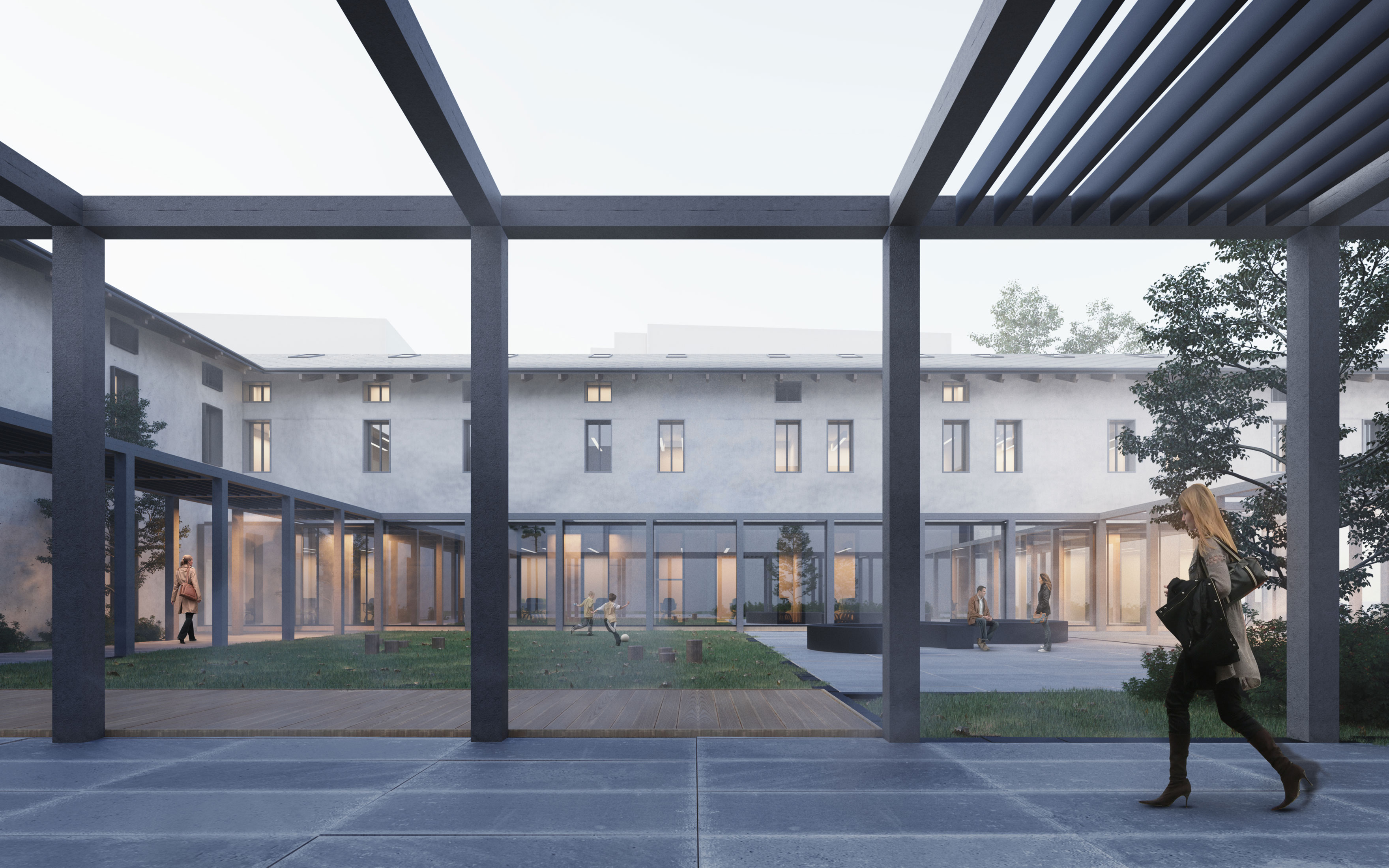
(en)
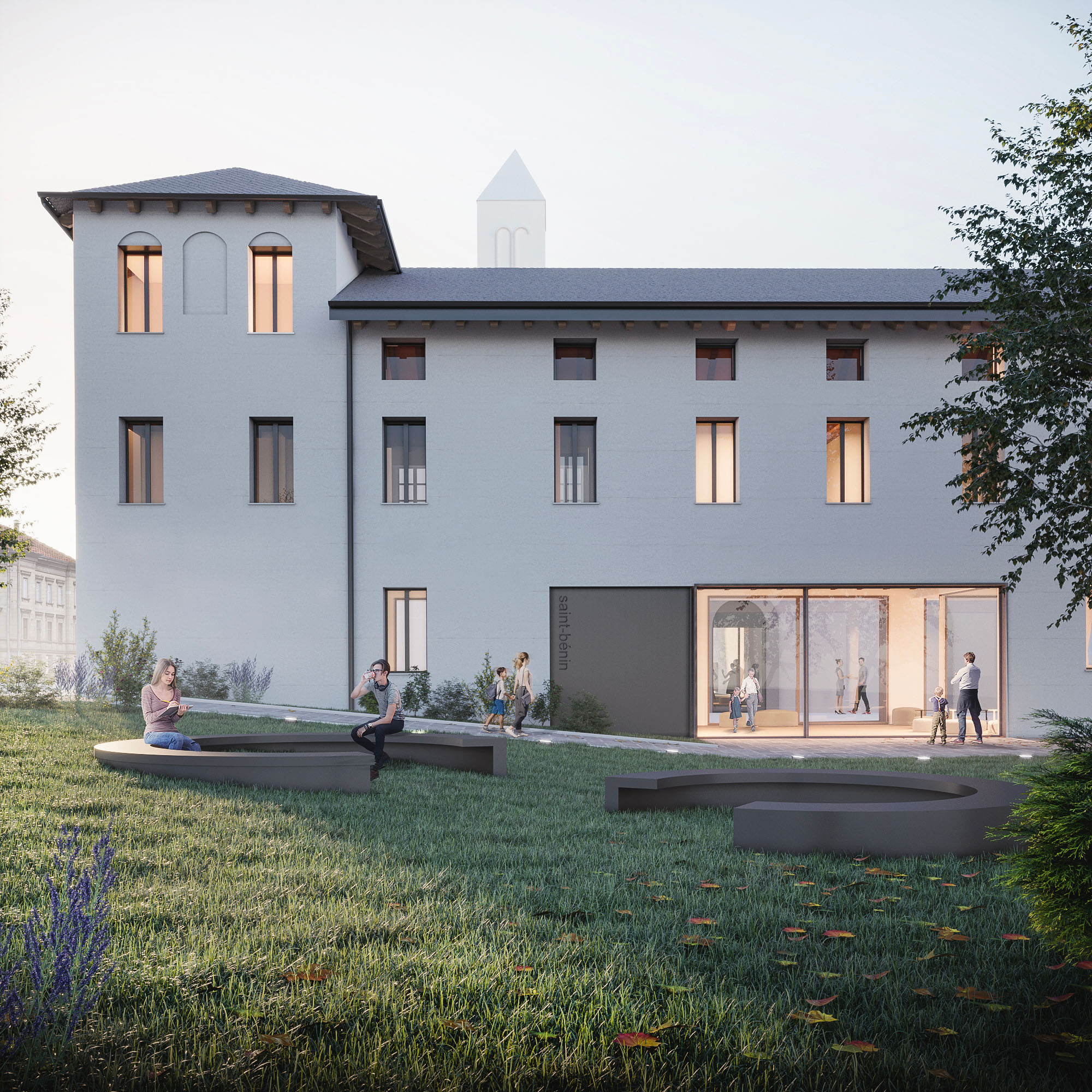
Dove un tempo si pregava, un giorno si potrebbe crescere: studiare, esplorare, stare insieme.
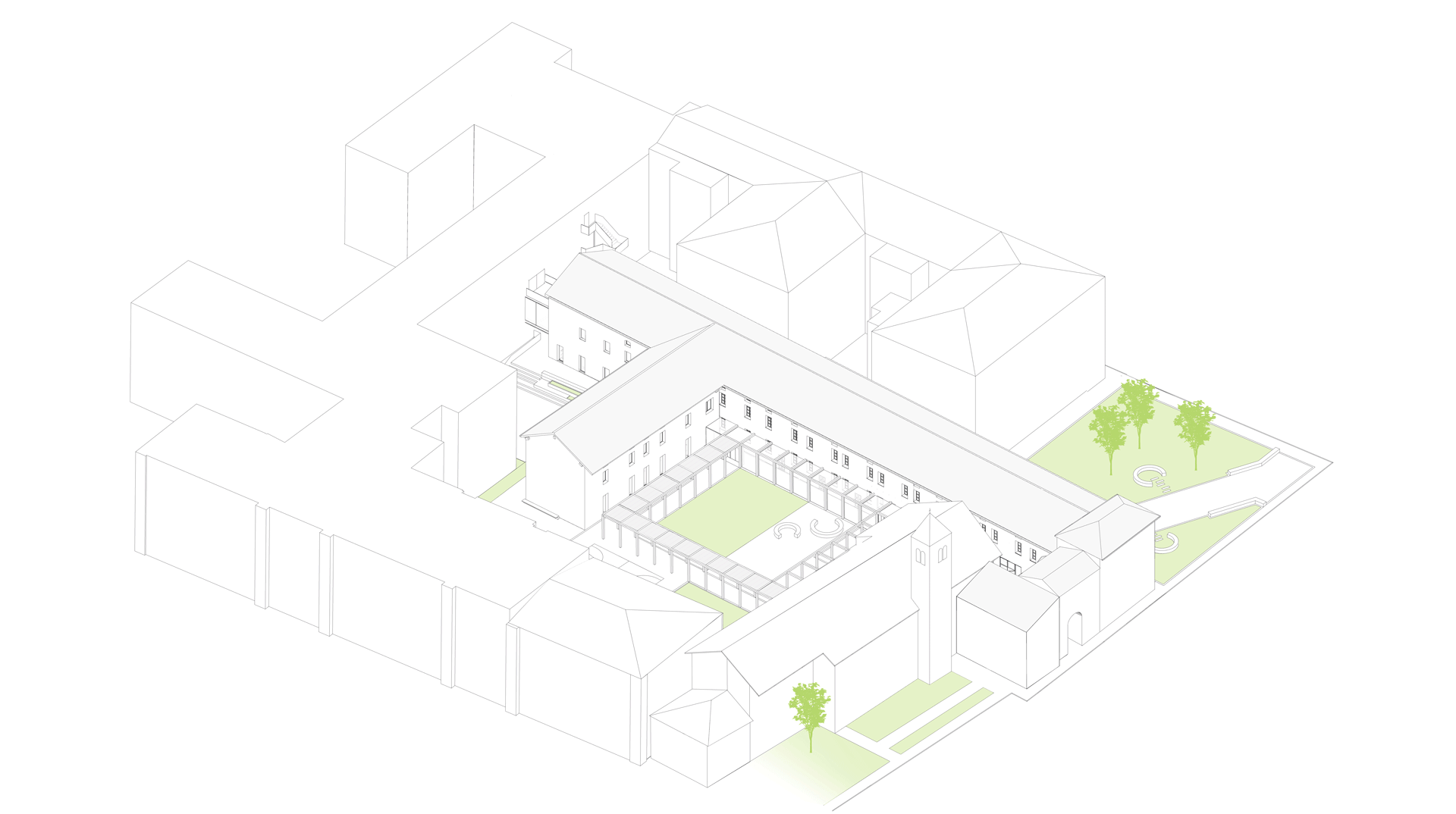
Come trasformare un ex priorato vincolato nel cuore di Aosta in un luogo dove la conoscenza diventa esperienza quotidiana, e la memoria si intreccia al futuro? Questa era la domanda al centro della nostra proposta : uno spazio denso di storia, pronto a ospitare nuovi modi di apprendere, incontrarsi e abitare la cultura.
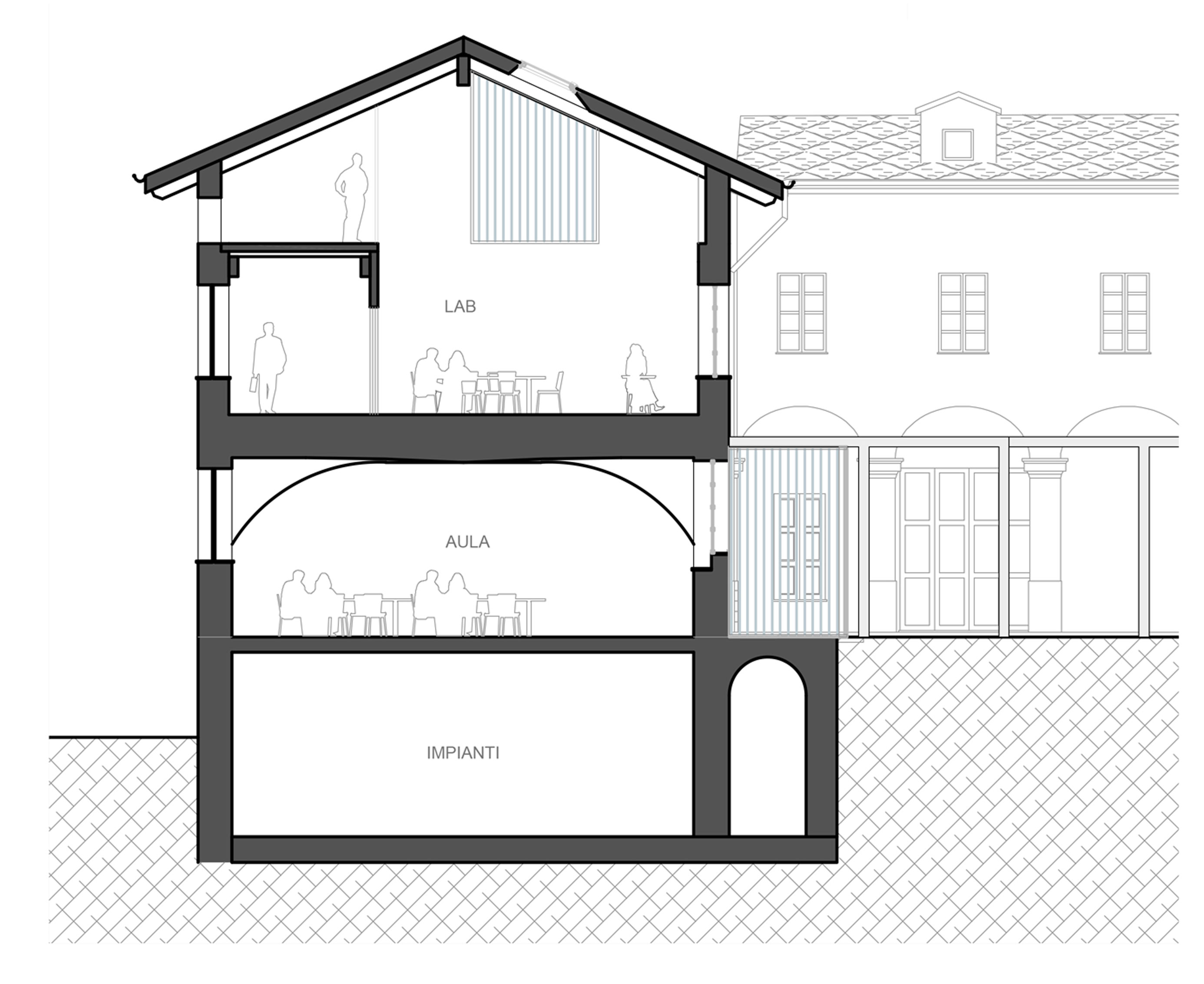
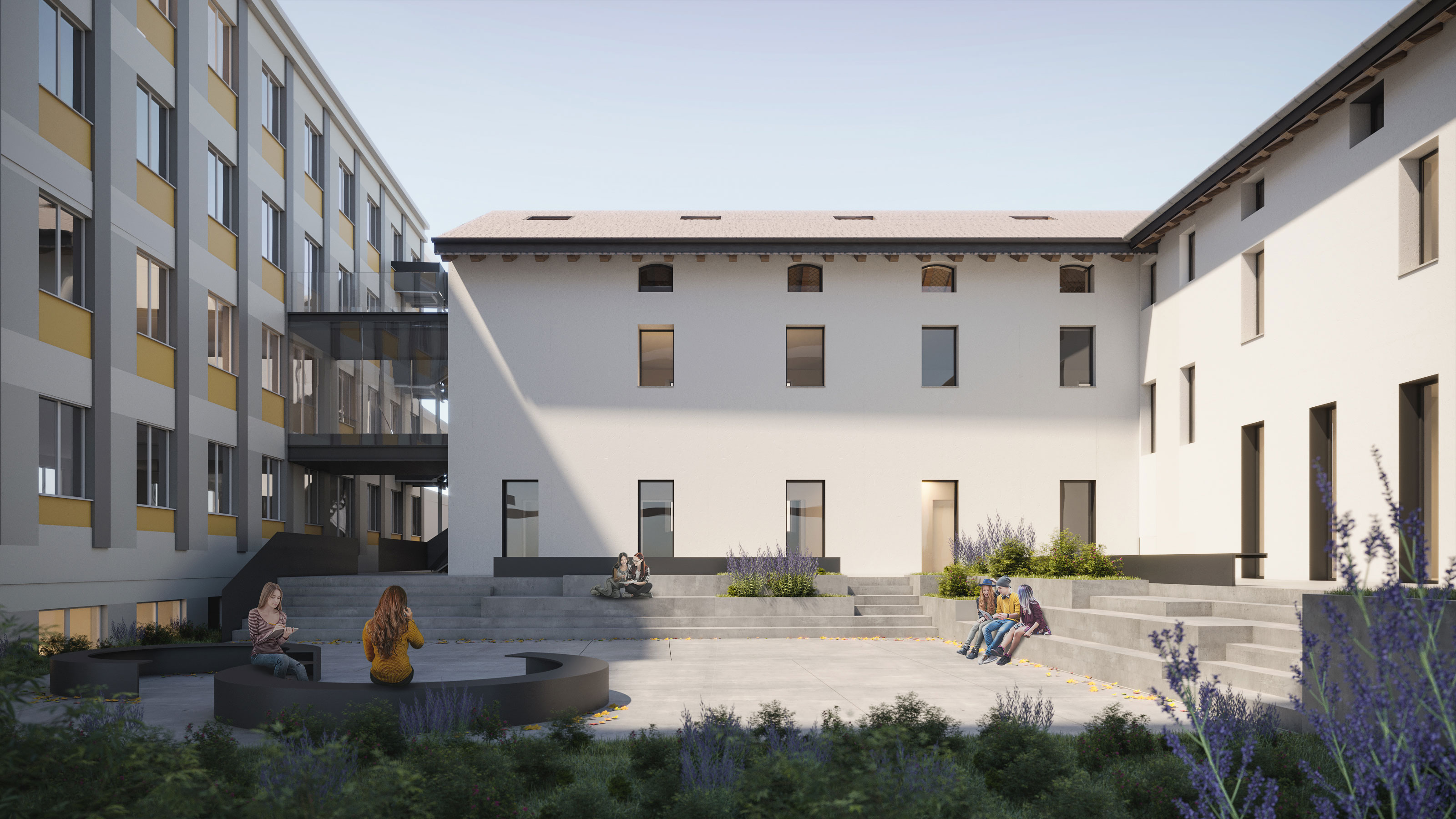
Il progetto nasce da una visione semplice: restituire continuità a un luogo oggi frammentato, riattivando connessioni fisiche, visive e simboliche.
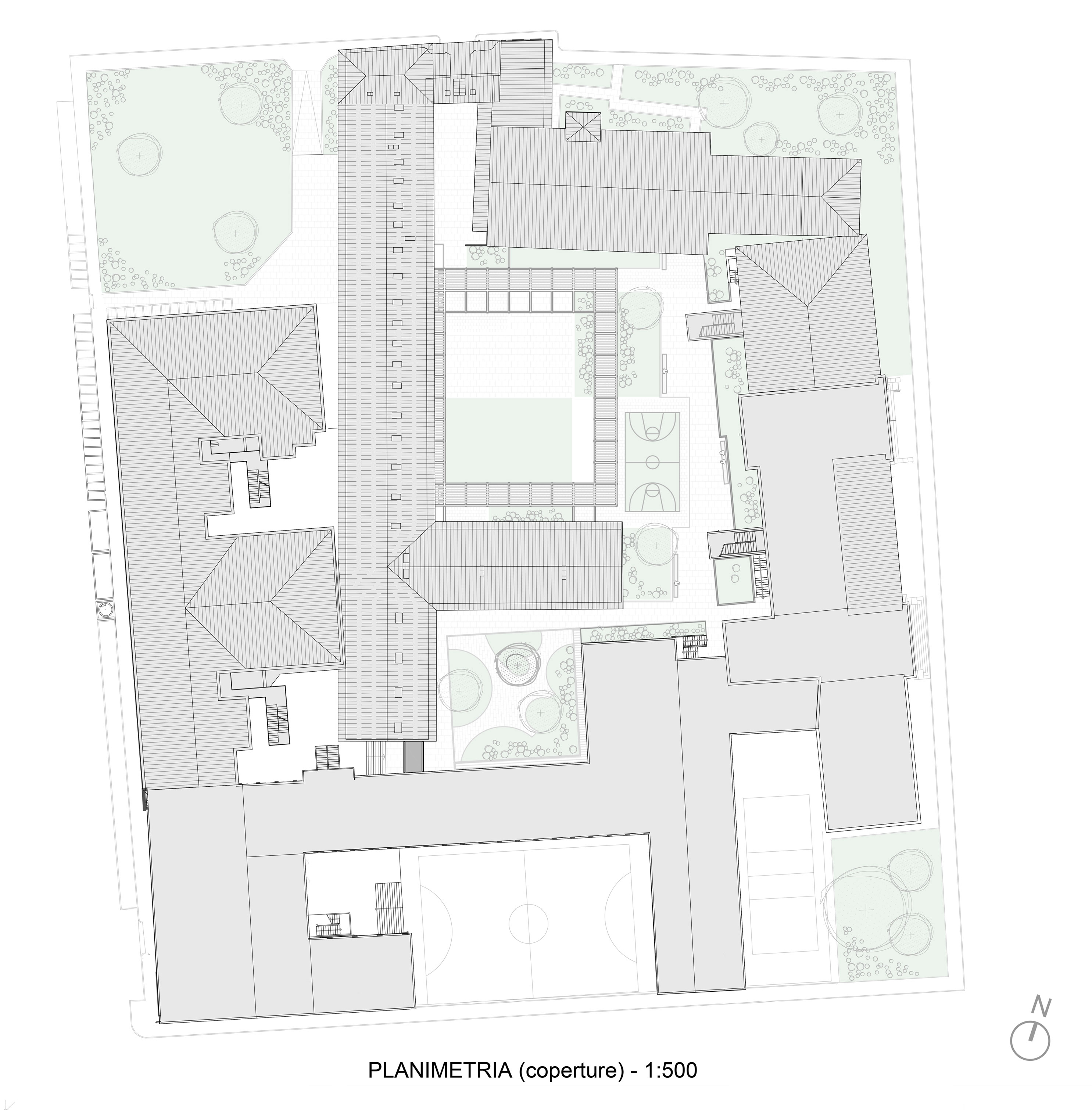
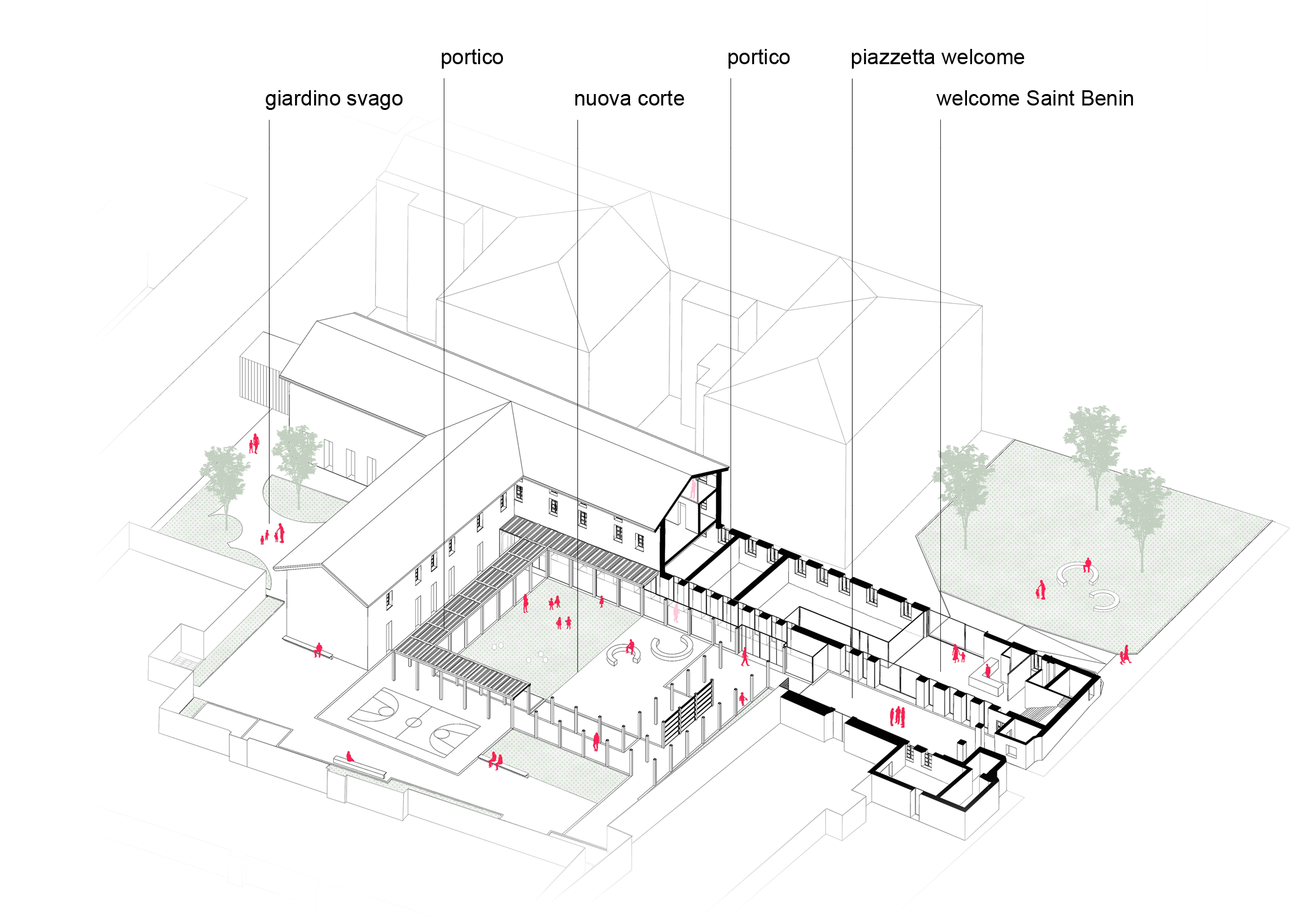
L’idea era quella di creare un sistema aperto e poroso, capace di accogliere. studenti, docenti, cittadini e visitatori. Una piazzetta pubblica diventa la nuova soglia, il gesto architettonico che apre il complesso alla città. Da qui si diramano percorsi chiari, accessi distinti, ambienti riconfigurabili. L’ex chiesa, liberata dalle superfetazioni e messa in relazione con gli altri corpi attraverso un nuovo portico, torna protagonista dello spazio urbano e del vissuto quotidiano.


Il progetto rispetta e interpreta la complessità dell’esistente: recupera le volte storiche, integra il sistema di scale settecentesche, lavora per sottrazione e trasparenza.

Dove servono nuovi spazi, interviene con leggerezza: strutture a secco in acciaio e legno, impianti intelligenti, soluzioni reversibili e sostenibili.Ogni gesto punta alla massima flessibilità d’uso, senza mai tradire l’identità originaria del luogo.
Abbiamo immaginato ambienti che potessero adattarsi nel tempo, assecondando le evoluzioni della didattica e delle comunità che li abitano.
Aule, sale conferenze, spazi espositivi, zone di relazione:tutto è pensato per essere attraversato, vissuto, trasformato. E tutto parte da una domanda che ci guida sempre: cosa serve davvero oggi per imparare, insieme?
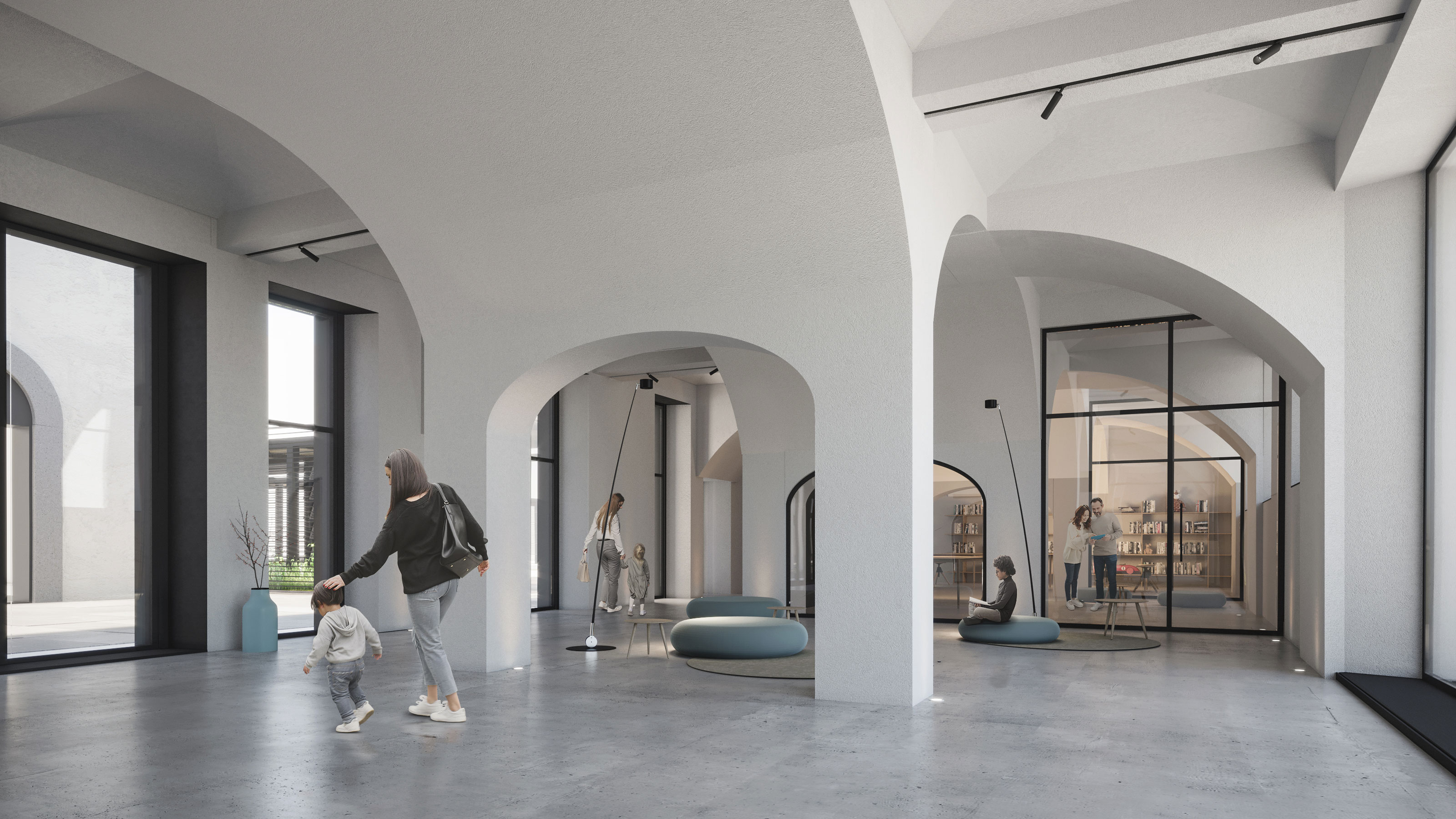
(en)

Where people once came to pray, one day they might come to grow: to study, explore, and share knowledge together.

How can we transform a listed heritage building, a former priory in the heart of Aosta, into a place where learning becomes part of daily life — and memory meets the future? That was the questionat the center of our proposal : a site rich in history,ready to welcome new ways of learning, gathering, and engaging with culture.


The project stems from a simple vision: to restore continuity to afragmented place by reactivating its physical, visual, and symbolic connections.


The idea was to create an open, porous system that could welcome students,teachers, citizens, and visitors alike. A new public square becomes the threshold — the architectural gesture that opens the complex to the city. From there, clear paths unfold, with distinct entrances and reconfigurable environments. The former church, freed from superfluous additions and reconnected to the rest of the site through a new colonnade, returns as acentral presence in both urban space and daily life.


The project carefully respects the complexity of the existing context: it restores the historic vaulted ceilings, integrates the 18th-century staircase system, and works through subtraction and transparency.

Where new space is needed, the intervention is light: dry construction systems in steel and timber, smart infrastructure, reversible and sustainable solutions. Every move aims for maximum flexibility — without compromising the identity of the place.
We imagined spaces that could adapt over time, evolving alongside education and the communities that bring it to life. Classrooms, conference rooms, exhibition areas, and relational zones: everything is designed to be crossed, lived in, transformed. And it all starts with a question that continues to guide us: what do we really need today— to learn, together?
